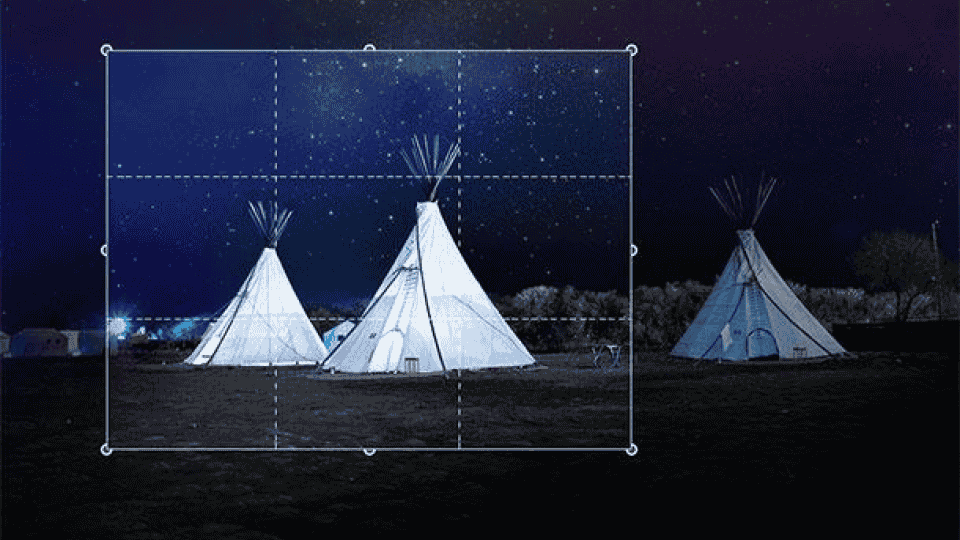A Strategic Guide for Marketers
Introduction
Visuals have emerged as the essential component of effective communication in the fast-paced digital world of today, particularly in marketing. It's critical to stand out with carefully chosen visuals in an ever-inundating market for customers, and mastering visual composition is essential for marketers to achieve this.

It is impossible to overestimate the importance of visual composition—it is a potent instrument for evoking strong feelings in viewers, developing brand identification, and engaging audiences. Photographers who are aware of the fundamentals of visual composition can produce powerful, memorable photos.
In the vast and intricate world of photography, composition emerges as the soul of the image. The soul that guides the viewer’s eye narrates the story within the frame and provokes emotion: that is, composition. Yet, not every image that is lucky enough to find a photographer in its way is flawlessly captured, requiring a finer form of artistic intervention – cropping.
However, cropping is not merely a resizing tool. Instead, it is a deeply artistic process of redefining, refining, and further composing the already existing composition. In this blog, I will introduce the beginner and the more experienced photographer to the basics and the delicate art of cropping – a lost secret weapon in the visual artist’s arsenal.
The Art of Composition
At its core, composition in photography is the deliberate arrangement of elements within the frame, working in harmony to capture the essence of a moment or the innate beauty of a subject. It is, to say, an integral aspect for any aspiring photographer interested not just in what is being said but how it is being expressed.
Certainly, it is much more than having the subject positioned in the middle of the frame. Composition encompasses the surroundings, the style of taking the shot, from which angle, and whether at all light enters the used to say, not to mention the shadows. Only when one understands the rudiments and functional priorities of quality composition does an image stop being just a snapshot and become a visual story.
Cropping and Framing
Cropping serves as a post-production magic wand that allows photographers to refine or entirely reimagine the composition of their photos. It removes parts of an original image to emphasize its story or visual effect.
Framing, on the other hand, is inherent to the act of taking the photo the initial decision of what to include or exclude from the viewfinder. Cropping can adjust this initial framing, enhancing visual balance, drawing the viewer's attention to the intended focal points, and even altering the story the image tells. In such a way, photographers may even retell the story of the image. It is a chance to recreate the composition they initially wanted to achieve.
Composition Rules to Consider
Mastering composition involves understanding its foundational rules and knowing when to apply or deviate from them for creative effect. The rule of thirds, for instance, suggests dividing the frame into a 3x3 grid, placing the subject along these lines or their intersections for a more engaging composition.
Leading lines guide the viewer's eye towards the main subject, adding depth and perspective. Negative space, the area around and between the subjects, lends a photo simplicity and focus. Cropping can either accentuate these principles, ensuring they are more pronounced and effective, or apply them retrospectively if the original shot missed the mark.
Cropping to Highlight the Subject
One of the primary reasons for cropping a photo is to highlight the subject. This could mean zooming in to fill the frame with the subject, thus eliminating distractions or altering the composition to place the subject in a position of prominence according to compositional guidelines.
Cropping allows for the emphasis on the photo's story or thematic elements, focusing on what's truly important and ensuring the subject doesn't get lost in the chaos of unnecessary details.
Preserving Aspect Ratios
The aspect ratio the relationship between the width and height of an image is crucial in maintaining the structural integrity of a photo. While cropping for composition, preserving the aspect ratio ensures the photo remains proportional, preventing it from appearing stretched or squashed.
Understanding different aspect ratios and how they fit within various mediums (e.g., Instagram prefers square images, while landscapes may look better in wide formats) is vital in ensuring the final image looks intentional and professionally executed.
Understanding Resolution
The act of cropping inevitably reduces the number of pixels in an image, impacting its resolution. High-resolution images can tolerate significant cropping without noticeable degradation in quality.
However, with limited pixels to spare, each crop must be deliberate. Understanding the resolution requirements of your intended medium—be it print, web, or social media—is imperative to ensure the final image maintains its clarity and sharpness.
Online Photo Cropper
With advanced editing tools being made accessible to everyone, there is no longer any need for massive investments in software. Online photo croppers like Watermarkly are an easy and budget-friendly way for photographers of all skill levels to quickly crop their pictures. On top of that, they often come equipped with functionality to change aspect ratio, make minor adjustments, and even preview the final result live.
Practical Demonstration
Let’s walk through a practical example using an online photo cropper. Imagine a landscape photo where the main subject—a solitary tree—is somewhat lost amid a busy background. By accessing an online photo cropping tool, a photographer can
1. Upload the photo and select a cropping tool.
2. Choose an aspect ratio that suits the composition, possibly opting for a square format to focus on the tree.
3. Adjust the frame to exclude distracting elements, using the rule of thirds to position the tree at an intersection point for enhanced visual interest.
4. Preview the cropped image, ensuring the subject is now the focal point and visually balanced within the frame.
5. Save the edited photo, which is ready for sharing or printing.
Through this simple demonstration, it's clear how cropping can drastically change the photo’s impact, directing attention precisely where intended.
How To Translate It Into Marketing?
Composition is not just meant to make a picture look visually appealing. It is a useful marketing tool that can be used to evoke certain feelings in the users or the customers. Therefore making it an important tool for marketers. For example, you can showcase a product in a certain way that brings out the best visual appeal. Or, you can use lighting to highlight a product’s standout features.
You can even use color to give a sense of brand identity to a product. Coca-Cola, Vodafone, BMW, Instagram, etc., use the color red to create a brand presence. Therefore, composition is a very important marketing tool that can help you set your brand apart from others. Therefore, understanding visual aesthetics is crucial for a marketer who is looking to leave a mark on the industry.
Conclusion
In conclusion, cropping is more than the simple editing stage it is a building block of composition that should be approached with imagination and attention. All photographers, amateur or aspiring, should consider cropping as a standard part of their workflow, learning its theories and developing their practical skills to improve their photos.
Do not be afraid to experiment: see how your narrative changes with each frame, and remember that the small details can often narrate the most expansive stories. The process of adjusting the camera frame while shooting or the online edges in a tool, in the long run, is endlessly satisfying and fundamentally artistic.









